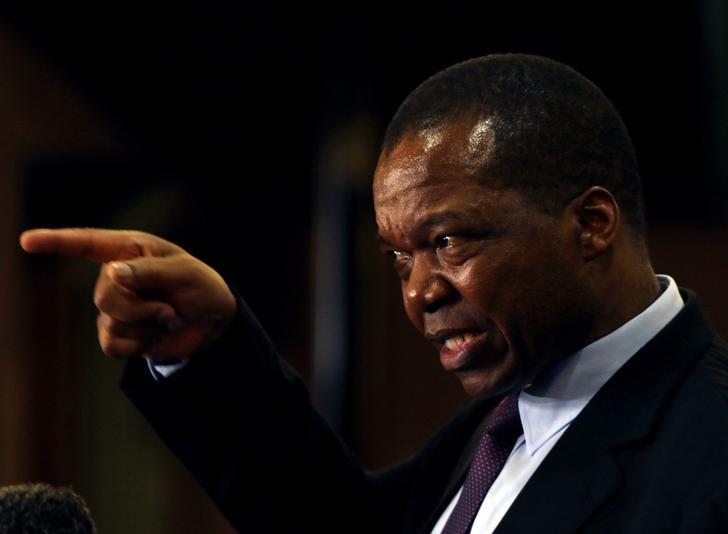Whose MPS should it be?
Different schools of thought have emerged among economic actors over this year’s Monetary Policy Statement set to be presented any time from now by outgoing central bank governor Dr John Mangudya with some arguing that the incoming Reserve Bank of Zimbabwe (RBZ) Governor Dr John Mushayavanhu is supposed to preside over the event to enable him to layout his roadmap.
By operations of the law, Mangudya should preside over the event since his term of office will only end in April this year.
However, insiders say although Mushayavanhu is yet to officially assume his central bank role, he is already part of the decision-making at the central bank and participated at the last Monetary Policy Committee meeting as well as contributing toward the 2024 Monetary Policy Statement.
Veteran banker and analyst, Dr Lance Mambondiani said he sees nothing unusual in Mangudya as the outgoing central bank governor presenting the next MPS as it is procedural for him to do so.
He said given that Mangudya’s term of office expires at the end of April, it means he is still the sitting RBZ chief empowered by the law to preside over the event.”
He is still the sitting governor and its standard procedure that the sitting governor is the one who presents the MPS . . . Of course for continuity, I would presume that before there is a handover takeover, the outgoing governor would work with his team to ensure that there is a credible MPS . . . And of course, this is a country issue, not a personality issue,” said Mambondiani.
Besides, Mambondiani said the new RBZ Governor has 10 years to present new ideas and there “is no hurry in” MPS presentation.”
“Monetary Policy Statements are documents that are prepared in advance and also depending on the state of the economy at the time . . . remember that the President (Mnangagwa) announced that there are going to be structural changes to be made to the economy, so I am assuming the governor is responding to the urgency that is required in addressing some of the challenges that we are experiencing in the economy, particularly the disparity between the official exchange rate and the parallel market rate and I don’t particularly think that can wait until May for the incoming governor.
“So, we cannot wait until May to introduce policy measures that can address some of the challenges that we are currently experiencing,” said Mambondiani.
This year’s MPS is expected to prescribe several interventions to stabilise the local currency exchange rate where the Zimbabwe dollar has somehow been losing traction against the US dollar, raising concerns about exchange rate stability.
Against this background, the upcoming MPS is expected to address other monetary challenges that have continued to haunt the economy, with market analysts who spoke to this paper this week contending that a new policy direction from a fresh mind was needed to help address the existing monetary issues.
Financial market analyst, George Nhepera said: “Since the outgoing central bank governor is nearing the end of his term of office, it may be tricky to expect any new policy changes with capacity to address the deteriorating macroeconomic environment.
“Our hope rests with the newly appointed governor who is expected to bring his vast market experience to a ‘test’ in solving the current monetary issues and problems.”
In the past, monetary authorities have prescribed a cocktail of measures to stymie the volatility in the currency market through interventions that included hiking bank lending rates to stop speculative borrowing, payment of corporate tax in local currency and transfer of external loan servicing obligations from the central bank to the Treasury.
While stability has seemingly been short-lived in as far as dousing the economic flames, another financial market analyst Grey Munetsi-Nyama said: “Ideally, the incoming central bank chief should have had an opportunity to come and set the tone of his governorship from the start.
“So, him starting the term with a road map from the outgoing raises eyebrows and in a way, it suppresses any expectations of changes in strategic direction.
“In the grand scheme of things, though assuming there is no politics behind it, the MPS is a policy of the central bank and by extension the government not an individual.”
Since December last year, the exchange rate has been unstable with the local unit plunging to between $16 000 and 16 500 against the greenback on the parallel market from about 8 000 to US$1 at the end of December last year.
Since the beginning of this year, the Zimbabwe dollar has depreciated by over 40 percent and this loss of value has seen the resurgence of financial market distortions and price increases.
In the recent past, the instability has been driven by several factors including speculative behaviour, an increase in money supply and high demand for foreign currency.
Wendy Mpofu, an economic commentator weighed in saying fresh minds bring new ideas.
“The elephant in the room is around the stability of the exchange rate. Now that Mushayavanhu is coming in as the new governor of the Reserve Bank, it is important that as he comes in he brings with him fresh policies to harness the exchange rate stability and inflation which continue to regress the economy,” said Mpofu.-ebusinessweekly











